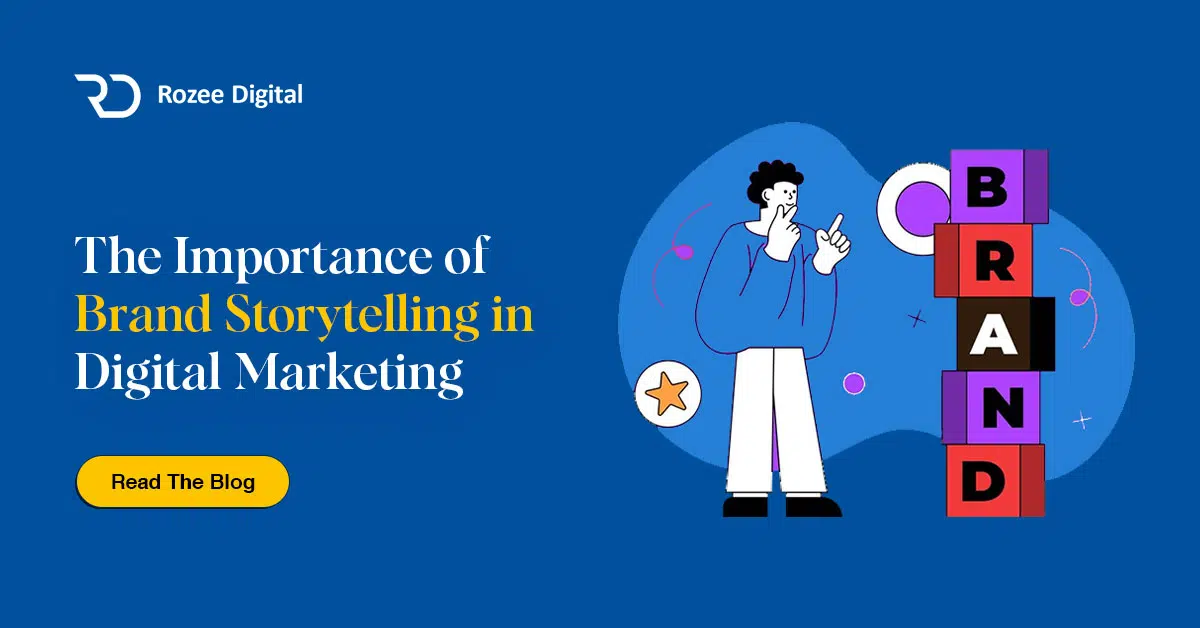Introduction to Ad Creatives in Ecommerce
In the fast-paced world of ecommerce, ad creatives play a crucial role in capturing the attention of potential customers and driving conversions. Ad creatives are the visual and textual elements used in advertisements to communicate a brand’s message, showcase products, and entice the target audience. Understanding the importance of ad creatives and following ad creative best practices can significantly impact the success of an ecommerce business.
Importance of Ad Creatives for Ecommerce
Ad creatives serve as the first point of contact between a brand and its potential customers. They have the power to create a lasting impression and influence purchasing decisions. Compelling ad creatives can:
- Capture Attention: In a crowded digital landscape, eye-catching ad creatives stand out from the competition and grab the attention of users scrolling through their feeds. They act as a visual hook, compelling users to pause and engage with the ad.
- Convey Brand Identity: Ad creatives reflect the personality, values, and unique selling points of a brand. They help establish brand recognition and create a consistent brand image across different marketing channels.
- Showcase Products: Ad creatives enable ecommerce businesses to showcase their products in a visually appealing and persuasive manner. They highlight the key features, benefits, and uses of the products, enticing potential customers to make a purchase.
- Drive Conversions: Well-designed ad creatives with a clear call-to-action can drive conversions by directing users to specific landing pages or product listings. They guide potential customers through the sales funnel, increasing the chances of a successful transaction.
What Are Ad Creative Best Practices?
Ad creative best practices are a set of guidelines and strategies that help ecommerce businesses optimize their ad creatives for maximum impact. These best practices encompass various aspects of ad design, messaging, targeting, and performance tracking. By following these practices, ecommerce businesses can enhance the effectiveness of their ad creatives and improve their return on investment (ROI).
Some key ad creative best practices include:
- Understanding Your Target Audience: To create ad creatives that resonate with your audience, it’s crucial to understand their demographics, preferences, and pain points. Tailoring your ad creatives to address the needs and desires of your target audience increases the likelihood of engagement and conversions.
- Creating Attention-Grabbing Visuals: Visual elements such as high-quality images, videos, and graphics can capture attention and convey your brand’s message effectively. Use visually appealing visuals that align with your brand identity and product offerings to make a lasting impression.
- Crafting Engaging Copy: Compelling ad copy that highlights the unique selling points of your products, uses persuasive language, and includes a clear call-to-action can significantly impact the effectiveness of your ad creatives. Well-crafted copy can entice users to take the desired action, whether it’s making a purchase, signing up for a newsletter, or visiting your website.
By incorporating these best practices into your ad creative strategy, you can create compelling and impactful ad creatives that resonate with your target audience and drive results in the competitive ecommerce landscape.
Designing Effective Ad Creatives
To create impactful and successful ad campaigns in the world of ecommerce, it’s essential to focus on designing effective ad creatives. This involves understanding your target audience, creating attention-grabbing visuals, and crafting engaging copy that resonates with your potential customers.
Understanding Your Target Audience
Before diving into the design process, it’s crucial to have a deep understanding of your target audience. Consider their demographics, interests, and pain points. This knowledge will help you tailor your ad creatives to their specific needs and preferences, increasing the chances of capturing their attention and driving conversions.
By conducting market research, analyzing customer data, and utilizing tools like ad creative targeting, you can gain valuable insights into your audience’s preferences, allowing you to create ad creatives that effectively communicate your brand message and resonate with your target customers.
Creating Attention-Grabbing Visuals
Visuals play a crucial role in capturing the attention of your audience. When designing ad creatives, aim for eye-catching visuals that stand out among the sea of online content. Use vibrant colors, compelling imagery, and clear product shots to draw the viewer’s attention.
Consider the platform where your ad will be displayed and adapt the visuals accordingly. For example, on social media platforms like Facebook and Instagram, where visuals are highly important, utilize visually appealing images or videos that showcase your product or service in an engaging way.
Remember to maintain consistency with your brand identity and use visuals that align with your brand’s tone and values. Stay away from cluttered designs and instead opt for clean and visually appealing layouts that highlight your product or service.
Crafting Engaging Copy
While visuals are important, the copy accompanying your ad creatives is equally crucial. Craft engaging and compelling copy that grabs the reader’s attention and entices them to take action. Use clear and concise language that conveys your message effectively and aligns with your brand’s tone and voice.
Tailor your copy to resonate with your target audience and address their pain points and desires. Highlight the unique selling points of your product or service and emphasize the benefits they offer. Incorporate ad creative messaging techniques such as storytelling, personalization, or segmentation to make your copy more impactful.
Remember to keep your copy concise, as attention spans are often limited in the digital realm. Use strong and persuasive language to create a sense of urgency or exclusivity, enticing your audience to click on your ad and explore what you have to offer.
By understanding your target audience, creating attention-grabbing visuals, and crafting engaging copy, you can design ad creatives that effectively capture the attention of your potential customers and drive them towards conversion. Continuously test and iterate your ad creatives based on ad creative performance and key metrics to optimize their effectiveness and achieve the best possible results.
Optimizing Ad Creative Elements
To create impactful ad creatives for your ecommerce campaigns, it’s essential to optimize various elements. By focusing on ad format and placement, utilizing calls-to-action, and conducting A/B testing and iteration, you can enhance the effectiveness of your ads and drive better results.
Ad Format and Placement
Choosing the right ad format and placement is crucial for capturing your audience’s attention. Different platforms offer a variety of ad formats, such as image ads, carousel ads, video ads, and more. Consider the nature of your product or service, as well as your target audience’s preferences, when selecting the most suitable ad format. Additionally, take into account the placement of your ads within the platform. For example, on Facebook and Instagram, ads can be displayed in the feed, stories, or the right-hand column. Understanding the platform’s ad options and utilizing the most relevant format and placement for your ecommerce business will maximize your ad’s visibility and engagement.
Utilizing Calls-to-Action
Calls-to-action (CTAs) play a significant role in guiding users towards the desired action. Incorporating compelling and actionable CTAs into your ad creatives can improve click-through rates and conversions. Consider using phrases like “Shop Now,” “Learn More,” “Sign Up,” or “Get Started” to encourage users to take the desired action. Additionally, ensure that the CTA is clear and visually prominent within your ad creative to grab attention and drive user engagement.
A/B Testing and Iteration
A/B testing is a valuable technique for optimizing your ad creatives. By creating multiple variations of your ads and testing them against each other, you can identify which elements resonate best with your audience. Conduct A/B tests on different aspects of your ad, such as the headline, visuals, copy, or CTAs. Analyze the performance metrics, such as click-through rates, conversion rates, and engagement, to determine which version of the ad performs better. Once you identify the winning variation, iterate and refine your ad creative further to continually improve its effectiveness. Regularly testing and optimizing your ad creatives will allow you to stay ahead of the competition and achieve better results.
By optimizing the elements of your ad creatives, you can enhance their impact and effectiveness in driving conversions and achieving your ecommerce goals. Remember to consider the ad format and placement, utilize compelling calls-to-action, and constantly test and iterate your ad creatives to ensure optimal performance. For more insights on ad creative best practices, be sure to explore our articles on ad creatives and best ad campaigns.
Ad Creative Best Practices for Different Platforms
When it comes to creating ad creatives for ecommerce, understanding the best practices for each platform is essential. Different platforms have unique characteristics and audience behaviors that influence the effectiveness of ad campaigns. In this section, we will explore Facebook and Instagram, Google Ads, Pinterest, and Twitter.
Facebook and Instagram
Facebook and Instagram are highly visual platforms that offer a variety of ad formats to engage with users. To create effective ad creatives for these platforms, consider the following best practices:
- Eye-catching visuals: Use high-quality images or videos that capture attention and align with your brand identity. Incorporate creative advertising ideas to stand out in busy news feeds.
- Compelling copy: Craft concise and persuasive copy that conveys your message effectively. Highlight the unique value proposition of your product or service while maintaining a conversational tone.
- Strong call-to-action: Utilize clear and actionable calls-to-action to direct users to take the desired action, such as “Shop Now” or “Learn More.” Make sure the call-to-action is visible and stands out.
Google Ads
Google Ads allows you to reach users actively searching for products or services. To optimize your ad creatives for Google Ads, consider the following best practices:
- Relevant keywords: Conduct thorough keyword research to ensure your ad appears for relevant search queries. Incorporate keywords into your ad copy to improve relevance and attract qualified clicks.
- Compelling headlines: Create attention-grabbing headlines that clearly convey the benefits or unique selling points of your product or service. Use ad creative copywriting techniques to make your headlines compelling.
- Ad extensions: Take advantage of ad extensions, such as sitelinks, callouts, and structured snippets, to provide additional information and increase visibility in search results.
Pinterest is a visual discovery platform where users actively search for inspiration and ideas. To create effective ad creatives for Pinterest, consider the following best practices:
- Vertical images: Use vertical images with a 2:3 aspect ratio to maximize visibility in the Pinterest feed. Vertical images tend to perform better and capture more attention.
- Lifestyle-oriented visuals: Showcase your product or service in context, demonstrating how it fits into users’ lives. Use lifestyle imagery to inspire and engage users.
- Compelling descriptions: Write detailed descriptions that provide context and encourage users to take action. Utilize keywords to improve visibility in search results.
Twitter is a fast-paced platform where concise and engaging content is key. To optimize your ad creatives for Twitter, consider the following best practices:
- Short and impactful messages: Craft concise and impactful messages that capture attention within the limited character count. Use ad creative copywriting techniques to create compelling tweets.
- Visual elements: Incorporate eye-catching images, videos, or GIFs to enhance the visual appeal of your tweets. Use visuals that align with your brand and resonate with your target audience.
- Hashtags and mentions: Utilize relevant hashtags and mentions to increase the discoverability of your tweets and engage with relevant conversations.
By understanding the best practices for each platform, you can create ad creatives that resonate with your target audience and drive desired actions. Remember to track and analyze the performance of your ad creatives using key metrics to make data-driven optimizations.
Tracking and Analyzing Ad Creative Performance
To maximize the effectiveness of your ad creatives in the world of ecommerce, it is essential to track and analyze their performance. By setting up proper tracking, monitoring key metrics, and making data-driven adjustments, you can optimize your ad creatives for better results.
Setting Up Proper Tracking
To accurately track the performance of your ad creatives, it is crucial to set up proper tracking mechanisms. This can be achieved by implementing tracking pixels or tags provided by the advertising platforms you use, such as Facebook, Google Ads, Pinterest, or Twitter. These tracking tools allow you to collect valuable data on impressions, clicks, conversions, and other relevant metrics.
By correctly integrating tracking codes into your website or landing pages, you can attribute conversions and sales to specific ad campaigns or creative variations. This data is invaluable for understanding the impact of your ad creatives and optimizing your future campaigns.
Key Metrics to Monitor
When analyzing the performance of your ad creatives, it is important to focus on key metrics that provide insights into their effectiveness. Here are some essential metrics to monitor:
- Impressions: The number of times your ad creative is displayed to users.
- Click-through Rate (CTR): The percentage of users who click on your ad creative after seeing it.
- Conversion Rate: The percentage of users who complete a desired action, such as making a purchase or filling out a form, after clicking on your ad.
- Cost per Click (CPC): The average cost you pay for each click on your ad creative.
- Return on Ad Spend (ROAS): The revenue generated from your ad campaign compared to the amount spent on advertising.
By analyzing these metrics, you can gain valuable insights into the performance of your ad creatives and identify areas for improvement.
Adjusting and Optimizing Based on Data
Data-driven decision-making is key to optimizing the performance of your ad creatives. Regularly analyze the data collected from your tracking efforts and make adjustments accordingly. Here are some strategies for optimizing your ad creatives based on data:
- Identify underperforming creatives: Review the metrics of your ad creatives and identify those that are not delivering the desired results. This could include low CTR, high CPC, or low conversion rates. Consider tweaking the visuals, copy, or targeting to improve performance.
- A/B testing: Test different variations of your ad creatives to identify the most effective elements. Experiment with different visuals, copy, or calls-to-action and compare their performance. This allows you to refine your ad creative strategy based on what resonates best with your audience.
- Optimize for different platforms: Different advertising platforms have unique requirements and best practices. Tailor your ad creatives to each platform to maximize their impact. For example, Facebook and Instagram have different ad formats and audience demographics compared to Google Ads or Twitter. Ensure your ad creatives are optimized for each platform’s specifications.
Remember, tracking and analyzing ad creative performance is an ongoing process. Continuously refine and optimize your ad creatives based on the insights gained from data analysis. By doing so, you can improve your ad campaign’s effectiveness, drive conversions, and achieve a better return on investment (ROI).








